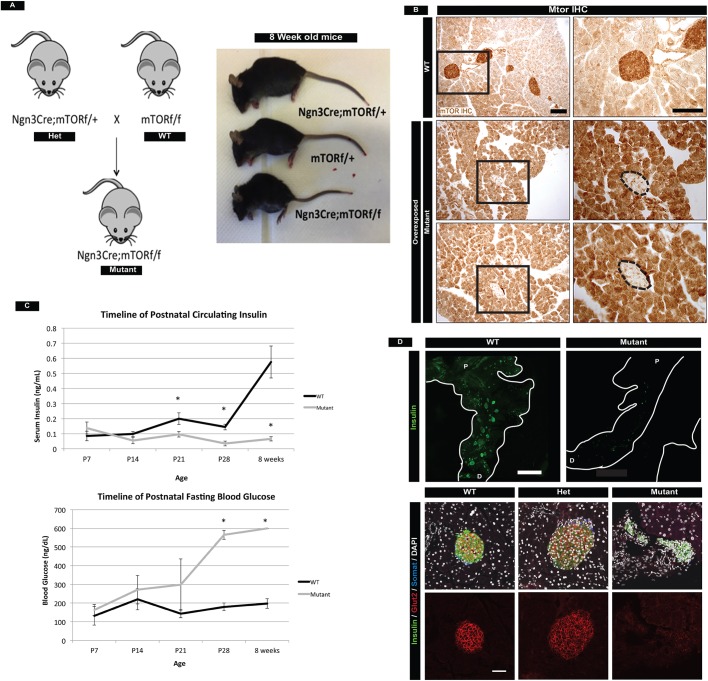Fig. 1.
Deletion of mTOR in the endocrine pancreas leads to loss of islet cell mass and hyperglycemia in adult mice. (A) Schematic of breeding Neurog3Cre;Mtorf/f (mutant) mice. Heterozygous mice were bred to Mtorf/f mice to obtain mutants. At 8 weeks of age, mutant mice are significantly smaller than their wild-type littermates. Both male and female mutants perish just after 8 weeks of age. (B) mTOR protein in wild-type and mutant islets. mTOR is efficiently deleted from islets of mutant mice (outlined) as compared with wild-type control mice. Mutant panels show overexposed immunohistochemistry (IHC) to highlight deletion of mTOR in islets. Boxed regions are magnified to the right. Scale bars: 100 µm. (C) Timeline of fasting blood glucose and circulating insulin levels in wild type and mutants. Increased glucose levels and reduced insulin are first detected at P14, worsen at P21, and all mutants are unable to regulate fasted glucose levels at P28. Mean±s.e.m.; *P<0.05. (D) (Top) Whole-mount immunofluorescence staining of insulin in the adult pancreas, showing reduction in the number of islets in mutant mice. P, proximal; D, distal. Scale bar: 1.5 mm. (Bottom) Analysis of insulin, somatostatin and Glut2 (single channel shown in bottom row) protein in adult islets. Mutant islets are morphologically distorted and have no detectable Glut2 protein. Scale bar: 50 µm. See also Figs S1 and S2, Movies 1 and 2, and Table S3 for the numbers of animals used.

